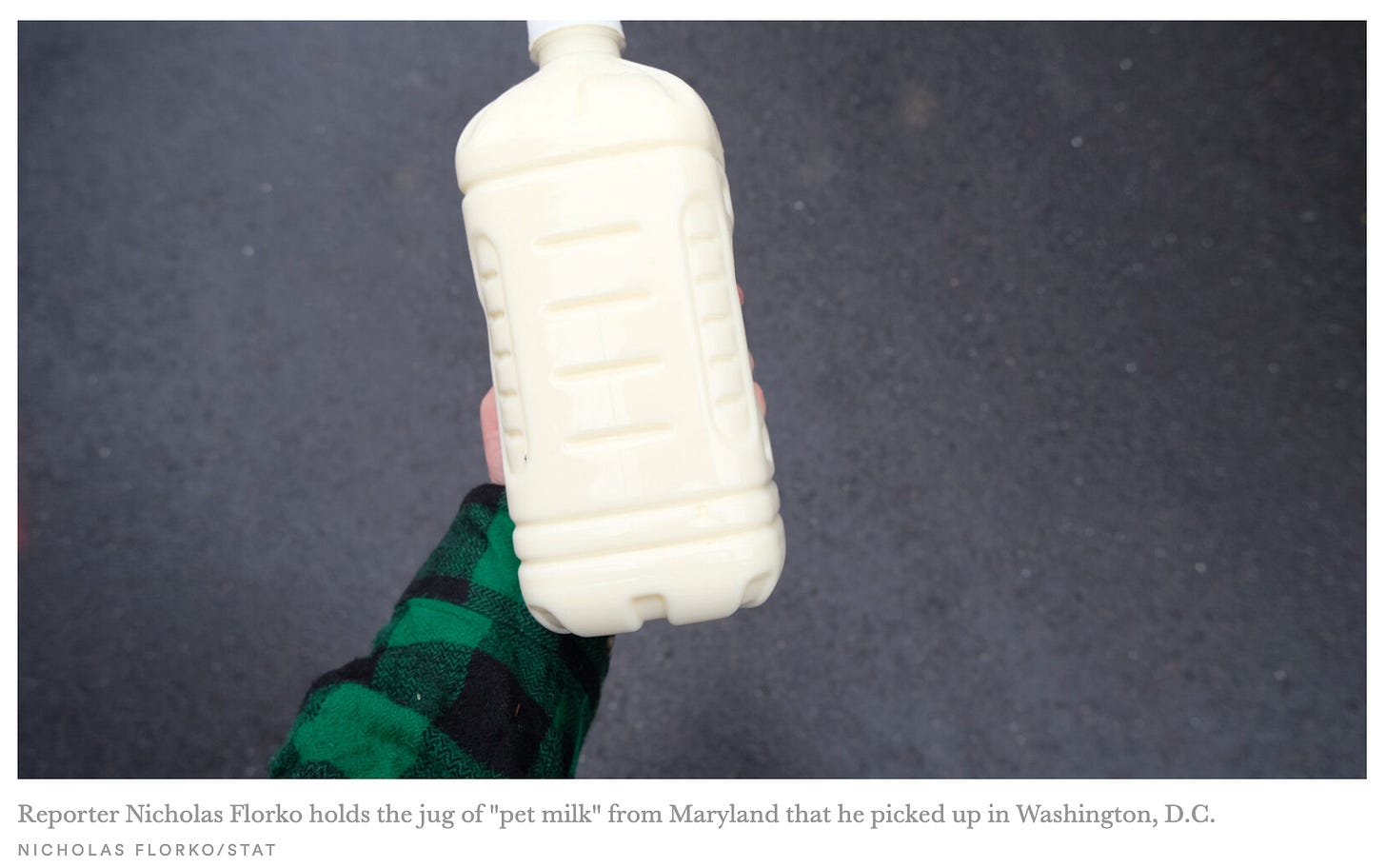Bird flu puts raw milk back in the hot seat
The fear mongering about bird flu is the perfect vehicle for a new mainstream attack on raw milk.
By now, you’ve probably seen the headlines about the outbreak of a highly pathogenic bird flu threatening the health of innocent, unsuspecting Americans. The words “highly pathogenic” are baked into the name of this new virus of pandemic potential: Highly Pathogenic Avian Influenza (HPAI). Welcome to the new age of fear porn.
“We don’t know how bad…it’s getting”, says New York Magazine in its headline. The Atlantic is worried about pigs becoming disease vectors, and the Boston Globe is here to tell you that bird flu was found in milk (DNA fragments, it turns out, not live virus).
That all sounds pretty scary. But so far, only two people have been infected and both came into direct contact with diseased cattle. After experiencing mild symptoms, they recovered quickly. No person-to-person transmission has been detected.
Fear mongering of a new pandemic aside, this bird flu narrative has been the perfect vehicle for a new mainstream attack on raw milk.
Inspired by health and fitness influencers on TikTok, interest in raw milk has been steadily on the rise lately. A study conducted by the FDA in 2022 found that about 4.4% of U.S. adults say they drink raw milk at least once a year, and 1% say they consume it once a week.
But since the outbreak of bird flu was announced, interest in raw milk has apparently soared even more. As PBS reported last week, “Since March 25, when the bird flu virus was confirmed in U.S. cattle for the first time, weekly sales of raw cow’s milk have ticked up 21% to as much as 65% compared with the same periods a year ago, according to the market research firm NielsenIQ.”
Much to the horror of public health officials, people are seeking out raw milk instead of staying away from it, in the face of this fearsome possible pandemic.
Last week in Stat News, reporter Nicholas Florko wrote about his own experience with procuring raw milk in the Washington, D.C., area. He highlighted the fact that, although interstate trade in raw milk is illegal, FDA enforcement is lax. He suggested that the “lapse in enforcement has taken on new significance as the H5N1 bird flu virus has spread to at least 46 dairy cow herds in nine states.”
My half-gallon of raw milk looked delicious. It was ice cold and the color of the most luscious French vanilla ice cream. But I did not indulge. My love of farm-fresh frozen confections does not outweigh my distaste for food poisoning — or bird flu.
Raw milk carries an outsized risk of containing bacteria ranging from Salmonella and E. coli to Listeria and Campylobacter. More than 2,600 people were sickened and 228 hospitalized from drinking raw milk between 1998 and 2018, according to data from the Centers for Disease Control and Prevention.
Illnesses from raw milk actually constitute a small fraction of total foodborne illnesses in the United States every year, while processed and canned foods contribute orders of magnitude more to the overall burden of foodborne diseases. One caveat on that is precise numbers for just processed/canned foods aren't readily available, but if we analyze notable outbreaks from processed foods, there’s considerable impact.
For example, while raw milk can be linked to 2,600 illnesses and 228 hospitalizations over 20 years, contrast that to illness — no doubt closely linked to our industrial food system — each year in the United States, according to the Centers for Disease Control:
Approximately 48 million people get sick from foodborne illnesses.
About 128,000 people are hospitalized.
Around 3,000 people die from foodborne diseases.
All this to say that raw milk is not the public health enemy it is made out to be. Rather, it’s more what raw milk symbolizes. Raw milk is a way to exercise agency and freedom of choice about what goes in our body. It’s a way to express a deep distrust in the systems charged with protecting our health. It’s a way to create an intimate relationship with the people who feed us, cutting out the industrial processors who have nothing but profits in mind.




This week's Vital Animal News (coming Sunday 26 May) will share your article and some very positive research on raw milk, showing a long lasting positive effect on allergies, which now run amok in both people and their pets. Common denominator for allergies: vaccination. It's posited that gut microbiome benefits of raw milk may be the key factor.
Those who fear raw milk and germs will want to read that. Better yet, you'll want to read about and visit the Amish and Mennonite communities and witness the notable lack of allergies and other chronic diseases. Raw milk and early barn exposure of infants gets the credit there.
“its a way to create an intimate relationship with the people who feed us, cutting out the industrial processors who have nothing but profits in mind” . Thanks for your article in support of Raw milk , which I love & helps keep me healthy .